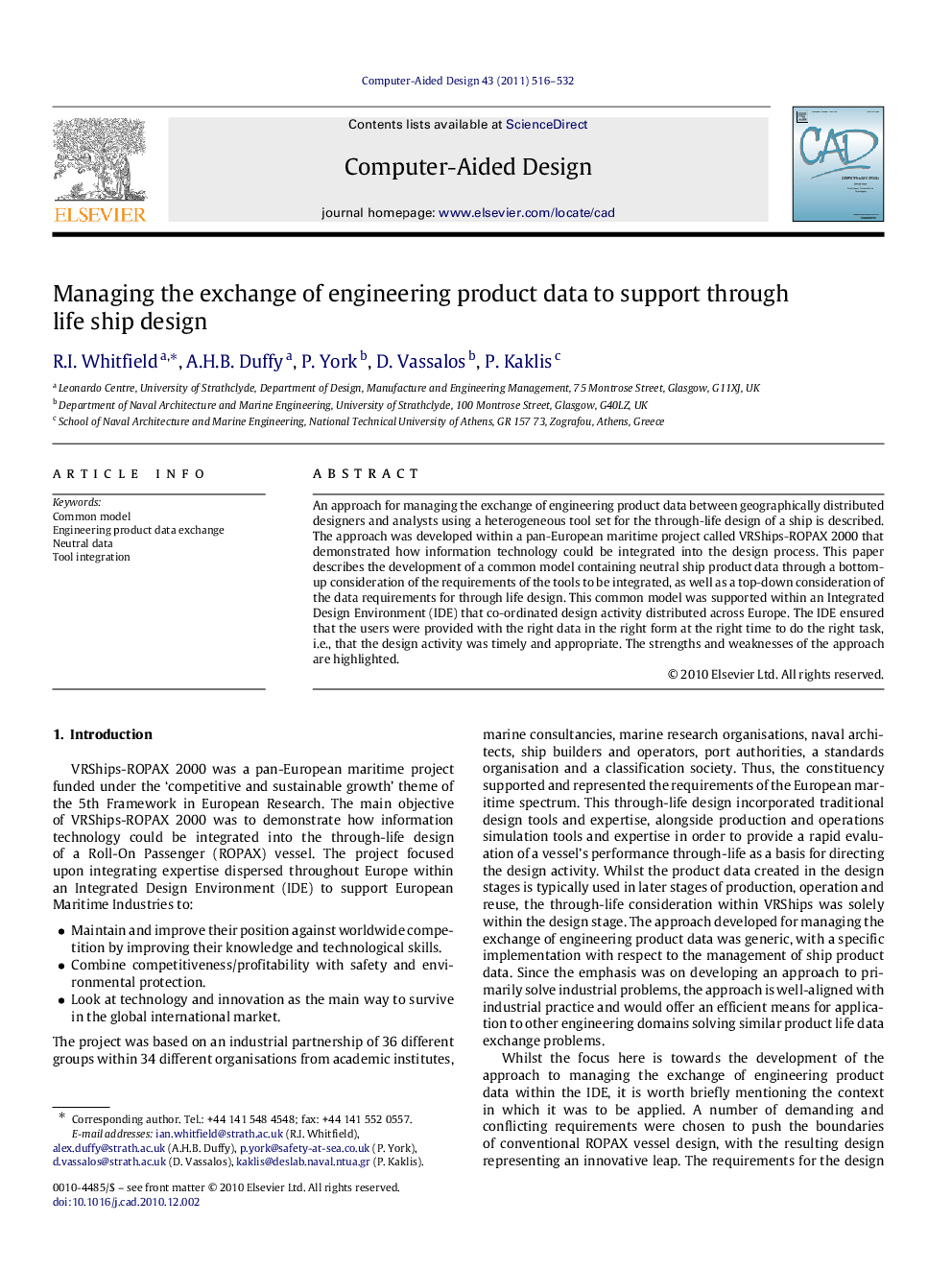| Article ID | Journal | Published Year | Pages | File Type |
|---|---|---|---|---|
| 440247 | Computer-Aided Design | 2011 | 17 Pages |
An approach for managing the exchange of engineering product data between geographically distributed designers and analysts using a heterogeneous tool set for the through-life design of a ship is described. The approach was developed within a pan-European maritime project called VRShips-ROPAX 2000 that demonstrated how information technology could be integrated into the design process. This paper describes the development of a common model containing neutral ship product data through a bottom-up consideration of the requirements of the tools to be integrated, as well as a top-down consideration of the data requirements for through life design. This common model was supported within an Integrated Design Environment (IDE) that co-ordinated design activity distributed across Europe. The IDE ensured that the users were provided with the right data in the right form at the right time to do the right task, i.e., that the design activity was timely and appropriate. The strengths and weaknesses of the approach are highlighted.
Research highlights► Minimalist/common data management philosophy to manage complex ship design. ► Dual consideration of data requirements of integrated tools and through-life process. ► Distributed engineering product data exchange coordinated across five countries. ► Loosely coupled integration architecture provided flexible interoperability. ► Interactive wrapping for integration of advanced design and simulation tools.
